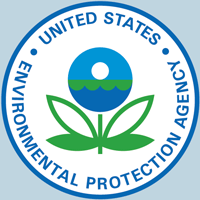
Water Safety
Water2Drink Blog > Water SafetyGet The Lead Out!Friday, May 9, 2014 - Posted by Water2Drink, in Water News, Water Safety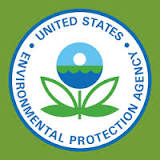
In 2011, the Federal Government enacted the “Reduction of
Lead in Drinking Water Act.” This law went into effect on January 4, 2014. The idea behind the act was to amend the Safe
Drinking Water Act regarding the use of metal fixtures, fittings, pipes, and
other metal components, in order to clarify the "lead free” requirements of plumbing
components. Here’s the Great News:
Multipure’s Drinking Water Systems are in full compliance. #Multipure products are certified for material
safety by NSF International when they are rigorously tested under the NSF/ANSI
Standard 42 testing protocol, and this certification extends to #lead content. As an educated consumer, you need to be aware that all of
the system components that Multipure provides with its’ systems should be
utilized for the installation of your water filtration system. By substituting non-compliant hardware when
making repairs or changes, a consumer could negate the certification testing
provided by the #NSF/ANSI testing protocol. Some consumers believe plastic
fittings are inferior to metal fittings, but that is not the case, particularly
when it comes to leaching harmful contaminants into drinking water. We’ve provided a link to a summary of the Act here. In particular, we recommend you specifically
read the “Frequently Asked Questions” section, which addresses questions raised
by the manufacturing and usage of certain plumbing components that may be used
in your home or office. You can also
find more information about lead in drinking water at the EPA’s website, or by
visiting the #Water2Drink Resource Center to learn how a Multipure Water Filter
works.
|
 1 Comments 1 CommentsTweet |
Open or Closed? Reservoirs, That IsFriday, April 18, 2014 - Posted by Water2Drink, in Water News, Water Safety
Headlines
this week report a young man in #Portland, Oregon was arrested for urinating through
a fence into the #MountTabor Reservoir #5.
Additionally, two other men tried to scale the fence, and one of those
men actually entered the water. While it
might seem like a harmless prank, the city decided to drain the reservoir – all
38 million gallons – because of the type of reservoir. This reservoir, one of five in Portland, is
an open reservoir that holds water that already has been treated and flows
directly into the water mains to customers. You may agree
with the city regarding the dumping of this treated water or you may not. But with an open reservoir, the possibilities
for contamination are endless. Urine
(either human or animal), surrounding land use run off, animal carcasses, or
algal growth may all contribute to reservoir contamination. |
 0 Comments 0 CommentsTweet |
Where's The Water?Friday, March 21, 2014 - Posted by Water2Drink, in Water News, Water Safety
Everyone knows of the lack of water in arid areas like Los
Angeles, CA and Las Vegas, NV. But what about Lincoln, NE? Cleveland, OH? Miami,
FL? Washington, DC? San Antonio, TX? If you didn’t think these cities would be
at risk for water availability, you might be surprised. All of these cities are on the list of 11 US
cities that have dramatically higher water usage than replenishment, according
to NOAA’s Cooperative Institute for Research in Environmental Sciences (CIRES)
2013 study. A recent article in the online magazine Water Conditioning & Purification (January 2014) outlines the
global supply and demand and how these cities suffer the effects of their water
demands. Only a small fraction of the
water used in the US (0.4 percent) is used for drinking. Flushing toilets account for 27 gallons per
person per day! While we may want to
believe that fresh clean water will always be available, many deficiencies in
our water supply may be disguised in at-risk areas. “Water-stressed regions frequently suffer from multiple
economic and public health adversities, including food and water quality
issues,” states the wpconline.com article.
Many water-stressed cities receive their water from locations that are
many miles away, and it may travel in open canals or waterways that are subject
to many levels of contamination. The Huffington Post also wrote about the risks for these 11
cities, citing the CIRES report and additional sources. If you live near or in these cities, you may
want to begin looking at your water usage.
For the health and safety of yourself and loved ones, consider using a
point-of-use water filtration system to ensure the quality of the water in your
home. You may want to begin talking to
your neighbors about what conservation efforts may be in place in your
area. It is going to take awareness and
action by all of us to change the trajectory of these vulnerable cities. #Miami #WashingtonDC #SanAntonio #SaltLakeCity #Lincoln #Atlanta #SanFrancisco #ElPaso #Houston #Cleveland |
 0 Comments 0 CommentsTweet |
Let It Rain!Friday, February 28, 2014 - Posted by Water2Drink, in Water News, Products, Water Safety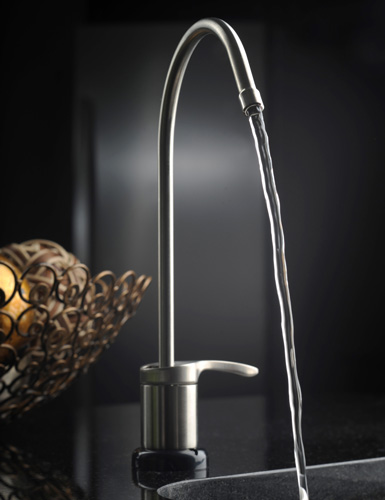
Finally, some good news! This weekend’s forecast for most of
California calls for heavy rain and snow over most of the state. While this is very
welcome news for the drought-stricken Golden State, it may also create flooding and
debris flows. Rain runoff and flooding
pose the potential for elevated levels of contaminants ending up in the surface
and ground waters that are the source of residential drinking water. For these reasons, it’s important to have a fresh, high
quality water filter available that will strip contaminants from your water
source. Water2Drink.com sells only the highest quality Multipure drinking water filtration systems that are NSF-certified and have a
lifetime warranty from the manufacturer.
If you are unsure of what contaminants are reduced by a
Multipure drinking water system, you can check out the NSF certifications list
on our website by clicking here. |
 0 Comments 0 CommentsTweet |
Gambling With Your Health?Friday, February 21, 2014 - Posted by Water2Drink, in Water News, Water Safety
A major chemical spill in Charleston, WV. A coal ash spill
in Virginia and North Carolina. A dike failure in Tennessee. Flooded farms that
spread fecal matter and fertilizers. Ongoing droughts. And every day, the
nation adds to the chronic, ongoing pollution of its drinking water with PPCPs
(pharmaceuticals and personal care products).
While your water source may be safe today, are these events gambling
with your health? National Geographic, one of the nation’s most trusted
sources for educational information, wrote a thought-provoking article that outlines the severity of these occurrences. All of the above events have happened within the United States
in the past decade alone. While the
majority of water treatment facilities are safe, it only takes an accidental leak
such as the January 2014 MCHM chemical spill in Charleston to overwhelm the
treatment facility. A coal ash contamination
may be even worse, such as the 2008 Tennessee dike failure and the 2000 Kentucky
pond failure. Coal ash contains heavy metals,
arsenic, thallium, and other dangerous toxins.
Not only do these events immediately impact the environment (such as
contaminating a nearby waterway), there is also lingering toxicity in the soil
and nearby freshwater and groundwater sources. Even the nation’s aging water transportation infrastructure
adds to the problem. “In the
American Society of Civil Engineers 2013 Report Card for America's
Infrastructure, the nation's drinking water infrastructure was given a D grade
for aging pipes, some of which date back to the Civil War. ‘At the dawn of the
21st century, much of our drinking water infrastructure is nearing the end of
its useful life,’" states the National Geographic article. There is something you can do to ensure you and your family
are protected. Educate yourself on the water quality being delivered to your
home. Start by looking at the National Tap Water Quality Database. Contact your local water authority and request
a copy of your local water report. Use an NSF-Certified point-of-use water filtration system like the Multipure family of products. You CAN beat the odds and
protect your home against unexpected water contamination threats. #CharlestonWV #CoalAshSpill |
 0 Comments 0 CommentsTweet |
Fouling the Waters?Tuesday, February 4, 2014 - Posted by Water2Drink, in Water News, Water Safety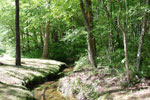
There can be political divide in Washington, D.C., but when
a gas-drilling operation threatens the waters of the nation’s capital, it is a
good sign to see citizens, water utilities, and federal agencies working
together to understand the risks involved. Recently, in a WashingtonPost.com column by Robert McCartney
(read it here),
it is reported that the gas industry is pursuing the gas drilling method known
as “fracking” in the George Washington National Forest. This forest includes the Appalachian
Mountains where the headwaters of the Potomac River are located. However, local water utilities, local cities
and counties near the forest, the Environmental Protection Agency, and citizens
are suggesting a decision be delayed until the release of a major study on the
effects of fracking by the EPA. If you believe this is just another problem within the political
halls of D.C., or an “inside the Beltway” issue, consider that the decision
reached about fracking in National Forests may impact the future of other
national forests. The George Washington National
Forest is near to adopting a new 15-year management plan, which may affect
decisions made in other national forests throughout the country. Awareness and involvement is key. Seek out information regarding fracking near
your water source, and get involved in local efforts that support your
position. If you are or could be affected by fracking, you can protect yourself
and your loved ones by using an effective point-of-use water filtration system,
like the ones listed here. #fracking #GeorgeWashingtonNationalForest #PotomacRiver |
 0 Comments 0 CommentsTweet |
Multipure and 4-Methylcyclohexane MethanolTuesday, January 21, 2014 - Posted by Water2Drink, in Health, Water News, Water Safety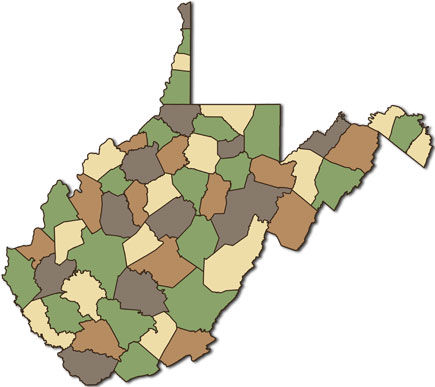 People everywhere are stunned to learn about the recent water pollution disaster in West Virginia. How could this happen? We all know that accidents happen, but with better oversight they often could have been avoided. But what about the unfortunate citizens of West Virginia who were directly affected by the toxic spill of 4-Methylcyclohexane Methanol into their water supply? What now? Water2Drink's customers who are using or considering purchasing a Multipure Drinking Water Systems want to know if they can use their Multipure water filter to help address this extraordinary water contamination problem. When asked this question, Multipure's resident expert, Multipure VP of Technical Services, Andrew Fenwick, PhD, offered the following comments: "We do not specifically test for the reduction of 4-Methylcyclohexane Methanol. It is not an organic compound included by NSF VOC surrogate testing, nor is there a reduction standard/protocol included in NSF Standards 42 or 53. With that said, based on the chemical nature of 4-Methylcyclohexane Methanol and results of past VOC testing, I expect that these filters would be effective at reducing the concentration of 4-Methylcyclohexane Methanol in drinking water (along with innumerous other analogous organic contaminants). We are unable to quantify the reduction efficiency or longevity/lifetime, as these characteristics depend on the concentration of the compound in the influent water, the water chemistry (TOC, pH, TDS, etc.), and the compound’s unique reduction characteristics (i.e., its affinity for the filter media). "But please note that, more than usual for topics like this, and based on the context of the question, I strongly caution the use of carbon block filters based on 'the concentration of the compound in the influent water.' These filters are highly effective at reducing numerous organic contaminants, but typically these contaminants are present in ppb (ug/L) concentrations. Higher concentrations (high ppb to ppm; i.e., high ug/L to mg/L) or above potentially suffer two ill-effects: inadequate contact time (more contaminant needs more contact with the filter media) and inadequate capacity (with adsorption technology, there is a limit to the amount of active sites before the filters become saturated/exhausted). Without knowing the concentration (or range in concentrations), I would not recommend the use of these filters as the primary treatment method. After primary treatment/remediation has taken place, I think these filters are an excellent technology to ensure reduction of residual 4-Methylcyclohexane Methanol in the distribution system and provide cleaner water for the long term." For more information on the contaminant reduction capabilities of Multipure Drinking Water Systems, please visit https://www.water2drink.com/resource-center/how-it-works-multipure-water-contaminant-reduction.asp.
|
 0 Comments 0 CommentsTweet |
Leaded or Unleaded?Monday, November 18, 2013 - Posted by Water2Drink, in Health, Water Safety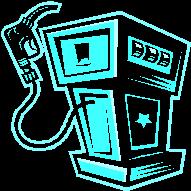
That used to be the question at gasoline pumps up until the
1970’s. Leaded gasoline was phased out
about 1975. But since that time, lead
has continued to be identified in other products such as paint, canned food,
glazed ceramics, leaded crystal, mini-blinds, and imported food. With increased awareness of lead poisoning, most
of these products have been modified to reduce or eliminate lead. However, lead can still be found in drinking
water! According to information from the New York State Dept. of
Health, lead seldom occurs naturally in water supplies. Rather, it primarily enters the water system
as materials containing lead are corroded in the water distribution system, and
also by the use of lead-based solder within plumbing products. (You can read the detailed NY State Health
Dept. information regarding sources of lead by clicking here.) It has long been recommended to avoid ingesting lead to avoid
lead poisoning. Children in particular are most commonly affected by lead
poisoning, but you do continue to accumulate lead in your body as an adult unless
you actively avoid lead exposure. One
way to do this is to use a water filtration system that is NSF-certified for
lead reduction. All Multipure Drinking Water
Filtration Systems are certified for lead reduction as well as other contaminants,
such as mercury and VOC’s (volatile organic compounds). Do your research and verify that your water
filtration system is NSF-certified!
You can find Multipure’s complete line of certified water
filtration systems at www.Water2Drink.com. Insist on “unleaded” – fresh, filtered water
for yourself and your loved ones! |
 0 Comments 0 CommentsTweet |
How Good Are Your Pipes?Friday, November 8, 2013, in Water News, Water Safety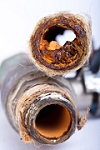 In focusing on the improvement of your drinking water, an
often overlooked topic is the condition of your water supply distribution
system. Most cities had their greatest
population growth and infrastructure expansions during the late 1800’s, around
World War I, through the 1920’s, and post-World War II. The materials, lifespan, and even the manufacturing
processes of the pipes laid during these times, all affect the quality of the
water delivered to your home today. The Water Science and Technology Board released their first
report of The Committee
on Public Water Supply Distribution Systems: Assessing and Reducing Risks
in 2005, which studied the public water supply distribution systems and their
potential risks. Since the report was requested by the EPA, it was written toward
a more governmental perspective. However, we feel our customers should begin to
learn more about our aging water distribution infrastructure, specifically by
reading Section
2, Trends Relevant to the Deterioration of Drinking Water in Distribution
Systems. Understanding the potential
problems can lead you to make a more educated decision about taking personal
control of your water filtration choice. |
 0 Comments 0 CommentsTweet |
What's In Your Water?Tuesday, October 1, 2013 - Posted by Water2Drink, in Water SafetyBefore spending your hard-earned dollars on a water
filtration system, you should begin by knowing exactly what is in your water that
may be harmful to your health and the health of your loved ones. Once specific contaminants and their levels of
concentration are identified, you can then evaluate the best water filtration
system to use to remove those contaminants. If you are unsure of what’s in your water, there are a few
steps you can take. The place to begin
is with your local water supplier. Federal
law requires that they issue an annual Water Quality Report. If the water provider cannot supply this
information, Water2Drink.com
recommends that you have your water tested prior to purchasing any water
filtration system. Just as the water filtration system you purchase should be
certified by a nationally recognized certification organization like NSF, the
public health and safety organization, the Environmental Protection Agency
(EPA) recommends that you select a water testing laboratory that is certified
by your state. You can call the state
certification officer, or click over to the EPA’s website at http://water.epa.gov/scitech/drinkingwater/labcert/statecertification.cfm
to identify a certified laboratory. Taking the time to have your water analyzed will give you the
information you need to make a thorough, educated decision about water
filtration. Water2Drink.com provides
links to Multipure
Product Performance Data sheets, so our customers can directly compare Multipure’s
NSF-certified performance levels to their water report.
|
 0 Comments 0 CommentsTweet |
Emergency Water TreatmentMonday, June 3, 2013 - Posted by Water2Drink, in Water SafetyEmergency
Drinking Water - What You Can Do in an Emergency Have you ever been in a situation where the water supply to your home has been interrupted? Many people have experienced such a problem when a major storm disrupted their local water utility. Generally, the news services provide a warning that a potentially disruptive weather event is coming your way, but sometimes there is no warning. What will you do if this happens to you? Just one real example of such an event occurred in Maryland on December 23, 2008 with no apparent warning. A massive 66-inch water pipe broke in the affluent Bethesda area, creating an overwhelming torrent of water that immediately endangered the lives of anyone who happened to be nearby. The outside temperature was in the 20’s and the local rescue teams had to work quickly to extract people from their cars using boats and helicopters. It appears that everyone involved made it out safely. But what about the water supply to all the affected homes and businesses? In this instance, residents were fortunate that the local water authority was able to redirect the water supply and restore service the same day. However, in many instances, an emergency like this one results in a disruption to water delivery that lasts for days. If you have ever been in this situation, you know that even a day without water seems like a lifetime, being unable to flush a toilet or find safe water to drink. Once water service is restored, life can return to normal – almost. Sometimes the disruption creates a breach in the water line that allows contaminants to enter the water supply. Even after the authorities declare the water “safe,” prudent people may want to take extra precautions, like boiling their tap water before consuming it. The Environmental Protection Agency has published guidelines on its public web site that you may find useful regarding how to handle “Emergency Disinfection of Drinking Water” (see http://water.epa.gov/drink/emerprep/emergencydisinfection.cfm). Taking the EPA’s recommendations one big step further, you may want to ensure the quality of your disinfected water by pushing it through a compressed carbon block water filter before drinking it. Multipure International manufacturers excellent filters for this purpose that have a lifetime warranty (see http://www.water2drink.com/products/multipure-drinking-water-filter-systems.asp), and they also offer an emergency hand pump to make the job easier. You can disconnect the input line on your water filter and attach it to the hand pump. Putting the water pump input line into the disinfected water and then applying a bit of elbow grease will produce gallons of clean drinking water that you will be quite pleased with. Please be prepared – it’s an “emergency” because you never know when it may happen to you! |
 0 Comments 0 CommentsTweet |


